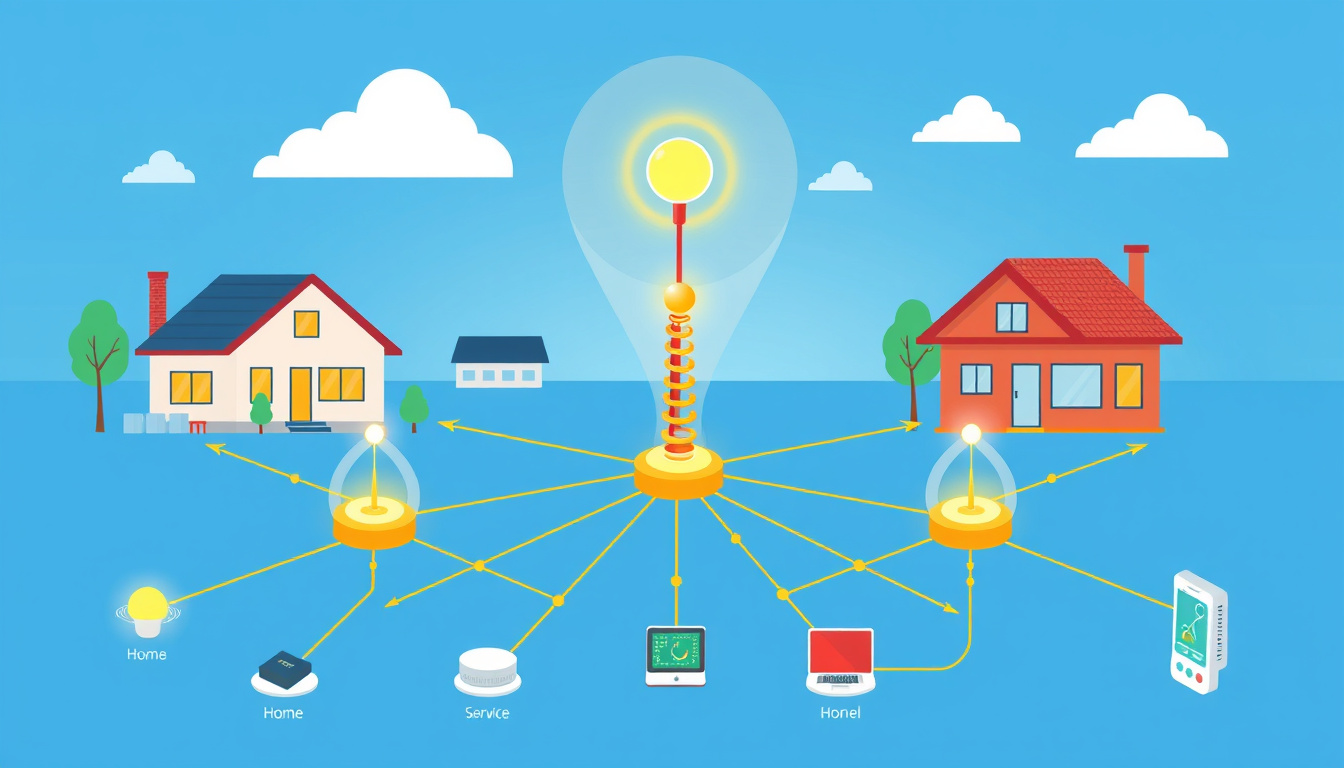In today’s world, where seamless internet connectivity is a necessity rather than a luxury, understanding the infrastructure that supports it is imperative. Among the most innovative solutions designed to enhance our network connectivity are mesh networks. This guide delves into what mesh networks are, how they work, their advantages and disadvantages, and their growing applications across various sectors.
What is a Mesh Network?
A mesh network is a system of interconnected nodes that work collaboratively to provide seamless connectivity over a designated area. Unlike traditional networks that require multiple cables for each connection point, a mesh network allows devices to communicate wirelessly, effectively spreading the internet connection across numerous nodes. In a typical setup, only one node, often wired to a modem or a main internet source, is needed; all other nodes share the connection wirelessly with one another.
Historical Background
The concept of mesh networking dates to the late 1980s, initially explored in military applications. However, it wasn’t until around 2015 that commercial products like mesh Wi-Fi systems began to gain traction due to advancements in technology and a growing demand for reliable wireless coverage in homes and businesses.

How Do Mesh Networks Work?
At the core of a mesh network are nodes, which are small devices equipped with multiple radios that communicate with each other. These nodes can transmit data both to users (clients) and to adjacent nodes, creating a web-like structure.
-
Node Communication: Each node connects to its nearest neighbors, relaying information across the network. When a data packet is sent, it dynamically finds the optimal path through the nodes, which helps in maintaining a strong signal even in larger areas.
-
Self-Configuration and Self-Healing: Mesh networks are designed to be self-configuring, meaning new nodes can be added without manual adjustments. They also have self-healing capabilities; if one node fails or is obstructed, the system automatically reroutes traffic through other nodes, ensuring uninterrupted service.
-
Decentralization: The decentralized architecture means there is no single point of failure. Each node operates independently but also cooperatively with others.
Advantages of Mesh Networks
Mesh networks offer several benefits, particularly in large and complex environments:
-
Extended Coverage: By increasing the number of nodes, a mesh network can cover greater areas than traditional Wi-Fi routers, eliminating dead spots.
-
Scalability: Enhancing the network is straightforward; adding more nodes increases not just range but bandwidth, improving overall performance.
-
Cost-Effectiveness: Since fewer wires are needed, the initial setup cost can be lower, especially in locations lacking infrastructure.
-
Easy Installation: Mesh nodes are generally user-friendly and can be placed anywhere within the coverage area without the need for extensive cabling.
-
Suitable for Diverse Environments: Mesh networks are effective outdoors and in locations where wired connections are difficult, such as parks, public buildings, and emergency sites.
Disadvantages of Mesh Networks
Despite their many advantages, mesh networks also have some drawbacks:
-
Cost: Although prices are dropping, mesh systems can still be more expensive than traditional systems, especially if multiple nodes are required.
-
Latency: In some cases, data may need to hop through several nodes, which can introduce latency compared to a direct wired connection.
-
Complexity of Setup: Although many systems are designed for quick setup, achieving optimal node placement can require some trial and error.
-
Limited Performance: In large scale applications with many nodes, the performance may be hampered if nodes have low processing capabilities.
Applications of Mesh Networks
The potential applications of mesh networks are vast and varied. Here are a few notable examples:
-
Home Automation: Mesh networks are particularly beneficial for smart homes, where numerous devices require stable and reliable connectivity. A single mesh network can manage multiple smart devices, ensuring they operate efficiently without interruptions.
-
Municipal Networks: Cities increasingly use mesh networks to provide free public Wi-Fi access. This not only helps citizens stay connected but also facilitates improved municipal services, traffic monitoring, and emergency responses.
-
Disaster Recovery: In disaster-struck regions, mesh networks can be rapidly deployed to establish communication lines that were interrupted, aiding in rescue and recovery efforts.
-
IoT Implementations: With the rise of the Internet of Things (IoT), mesh networks provide an ideal backbone for connecting various IoT devices across industries, including health care and industrial applications.
The Future of Mesh Networking
As we become more reliant on connected devices, the demand for robust, scalable, and flexible networking solutions is expected to increase. Mesh networking technology continues to evolve, promising enhancements in speed, reliability, and user experience. Emerging protocols and standards, such as Wi-Fi EasyMesh, aim to improve interoperability among different manufacturers’ systems, pave the way for seamless integration, and expand the utility of mesh networks.
Conclusion
Mesh networks represent a significant advancement in networking technology, providing a flexible, robust, and scalable solution for connectivity challenges. Whether for home use, municipal services, or emergency preparedness, understanding mesh networks is crucial for anyone looking to navigate the complexities of modern connectivity. As technology continues to advance, the applications and capabilities of mesh networks will likely expand, making them an integral part of our interconnected world.



